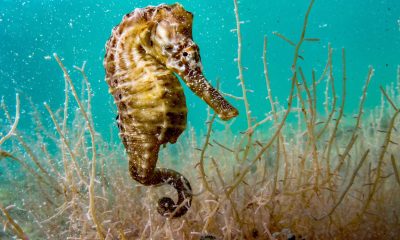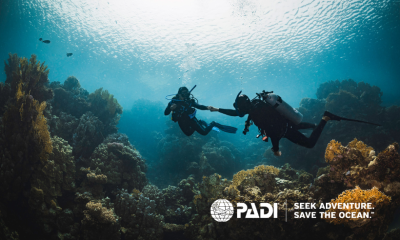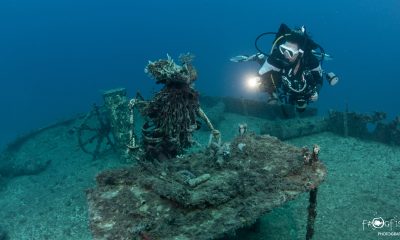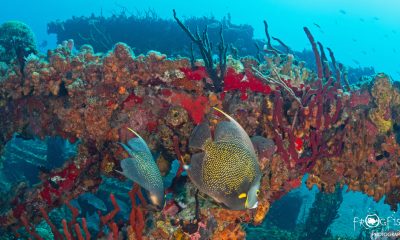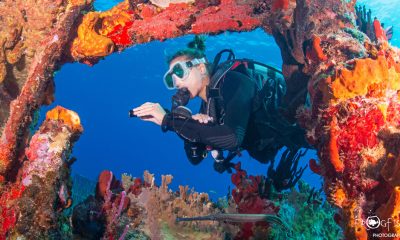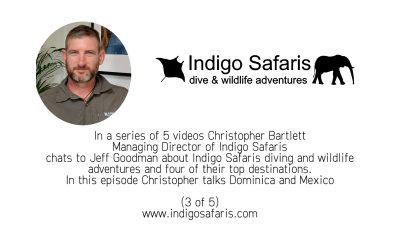Blogs
Paradise Found at Small Hope Bay in Andros
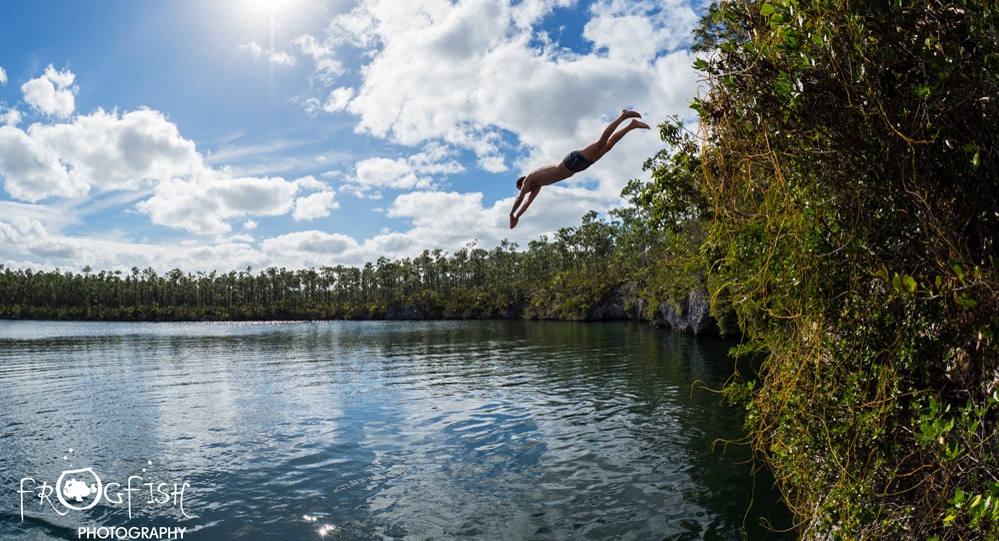
Andros is a Bahamian island we had not visited on any of our previous trips and so we were looking forward to a new experience. We arrived at Small Hope Bay, a family run, (truly) eco-friendly all-inclusive resort that sits right on the beach overlooking the clear blue waters we would soon be diving into. Our early morning flights meant that we had time to meet the team, head to our rooms, set-up our camera equipment and then walk along the jetty to the dive centre to get ready for a day of diving. We only had one day of diving here, so we were determined to make the most of it.
Our three dives were to cover a wide range of types of diving. Our first dive was to visit the famous oceanic blue hole and we were to be led by Jeff Birch, the owner of the resort and a legend in the scuba diving world. The dive started off on a beautiful reef and then Jeff beckoned us towards a crack in the reef. We followed him down and suddenly we found ourselves within the blue hole, heading deep to enable us to look up at the “window” of the blue hole and watch the divers swim past in the blue.
All too soon it was time to start to head to shallower water, and Jeff led us up through a fissure in the reef back up to the coral, where we found a school of friendly batfish to play with as we carried out our safety stop. Andros is famous for its blue holes, with both oceanic and inland sites to explore and the Small Hope team offer a speciality in this type of diving.
Our second dive was a real treat, as we got to see the pioneering conservation work that Small Hope Bay are involved in. They have set-up a coral allotment on the seabed, where they are growing new coral to transplant onto the reef. Our group even got to try their hand at a bit of coral “gardening” by helping to clean off any algae. There was also time to explore the reef and enjoy the marine life such as turtles, angelfish and barracuda.
Our final dive saw us visit the famous wall off Andros. Here the reef plummets to huge depths. We kept to the top of the reef and peered down the wall, watching reef sharks cruise by. We got a taste of the incredible diving that Andros had to offer and we wished we had more time to further explore the island and its diving.
For a day off diving before our flight, our hosts at Small Hope offered us a tour of the island, allowing us to visit the inland blue holes, as well as visiting the batik fabric industry that the island is famous for. Our walks would find us following trails through woods full of medicinal plants, that would suddenly open up to reveal a beautiful blue hole. Many of the group took the chance to jump in and go for a swim and the braver ones took a dive off the high platforms!
Whilst our visit to Small Hope Bay was very short, we were immediately made to feel like family. The staff join you for nibbles and cocktails after a day of diving, and everyone sits around talking about their experiences of the day. The food was excellent with some of the best vegetarian food we have eaten in the Caribbean.
We wish we could have stayed for longer!
For more information please visit:
All images & text by Nick and Caroline Robertson-Brown of Frogfish Photography.
Blogs
BVI Wreck Week – Diving (Part 3)

![]() BVI Wreck Week allowed us to dive several of the wrecks the BVI has to offer, as well as sampling some of the best reef sites too. Our previous blog focused on the wreck of the RMS Rhone, so in this one we will try to give you a taste of the rest of the diving on offer.
BVI Wreck Week allowed us to dive several of the wrecks the BVI has to offer, as well as sampling some of the best reef sites too. Our previous blog focused on the wreck of the RMS Rhone, so in this one we will try to give you a taste of the rest of the diving on offer.
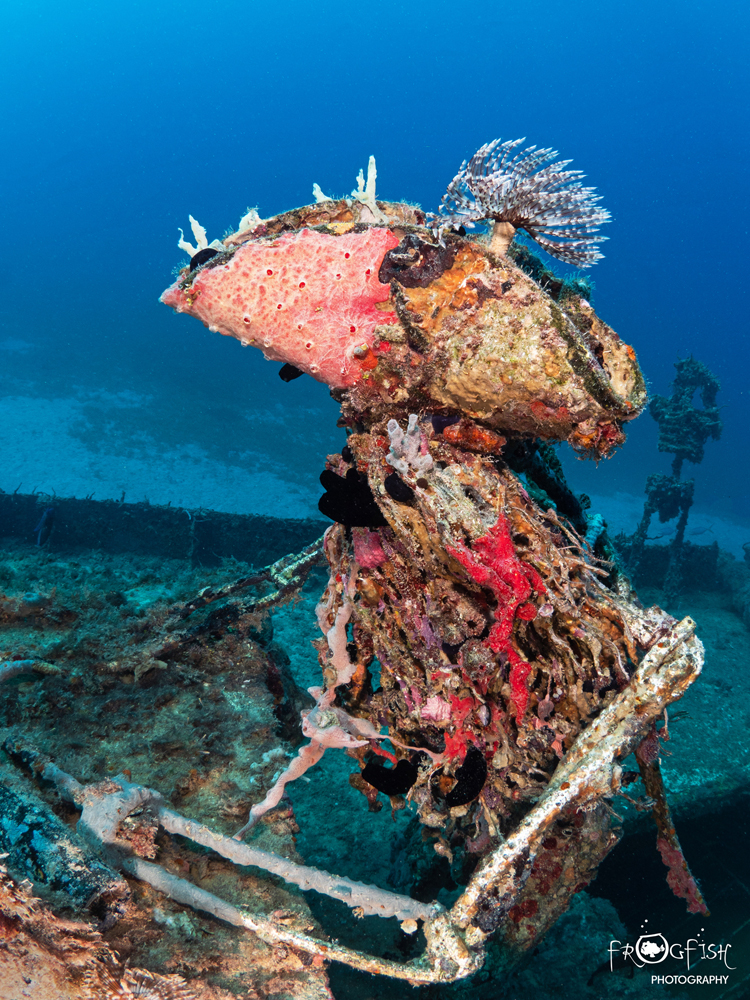
And there is a great deal of wonderful diving to tell you about. Our first day of diving did not offer the best visibility due to heavy rain earlier in the week. However, we were taken to a rugged dive site that had Caribbean and Lemon Sharks swimming all around us. If we had been able to see the usual 20m+ I am sure we would have been able to talk of dozens of sharks on the site.
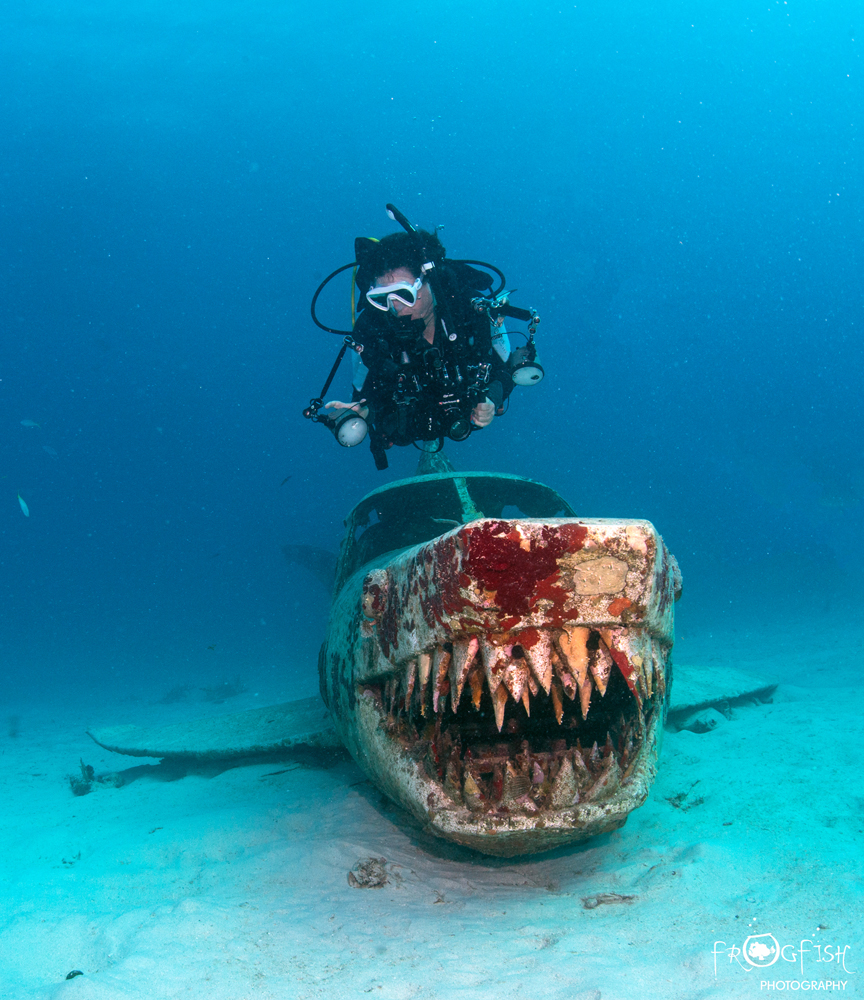
The BVI has plenty of artificial reefs, created from wrecks deliberately sunk. A couple of these are artistic creations from Beyond the Reef. The Willy T is a pirate themed party boat sunk in shallow water that now has skeletons of pirates duelling on the deck and going about their dastardly ways. It is a lot of fun and once you have had your fill, you can head up onto the shallow reef. Shark-plano is a series of three planes that were damaged in a hurricane, that have been turned into shark species and sunk. Both these sites are perfect for the diver that loves a bit of Instagram appeal!
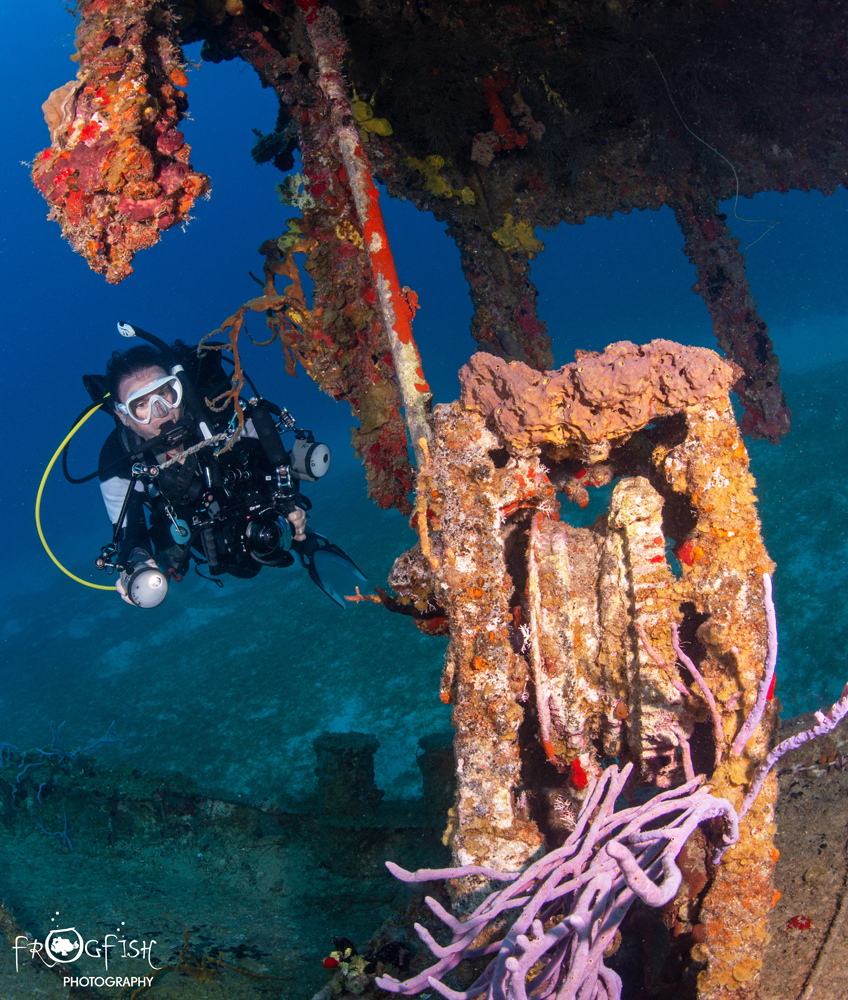
Wreck Alley has a series of three boats sunk to create a super dive site perfectly aligned for a single dive where you can explore them all. Moray eels can be seen free swimming along the decks, huge stingrays back the sandy seabed their home. Turtles cruise past as you make your way around and then up onto the reef for your safety stop.
On every dive we did we saw sharks which absolutely delighted us. The local dive shops seem to be particularly engaged in conserving the reefs, taking part in coral reef restoration, lionfish hunting, cleanups and logging their sightings. We were filled with positivity at the end of each day.
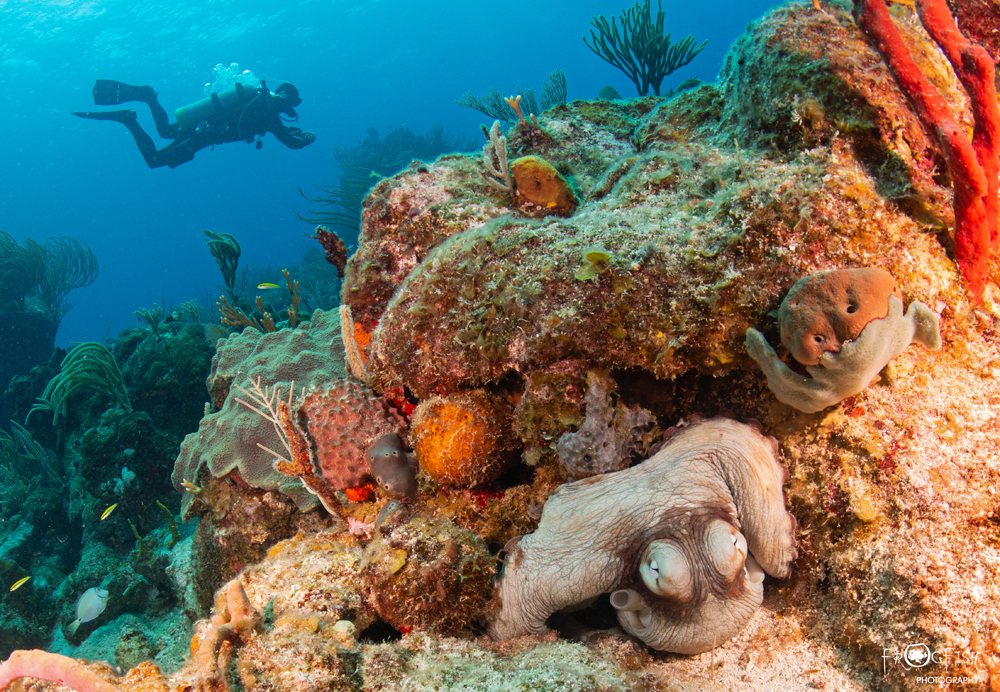
We hope that we can return to do it all again at BVI Wreck Week 2024!
Watch out for our full feature on BVI Wreck Week in the next issue of Dive Travel Adventures coming out in July.
For more information about BVI Wreck Week 2024 visit their website here.
Nick and Caroline were hosted by BVI Wreck Week
The Moorings provided their yacht for the week
Host Dive Centres:
Blogs
BVI Wreck Week – Diving the RMS Rhone (Part 2)
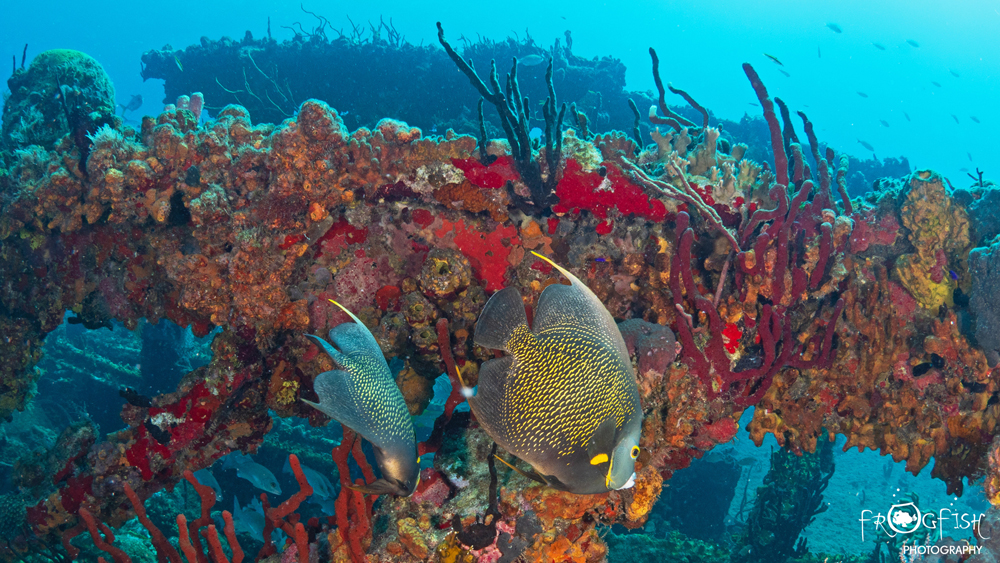
![]() You cannot talk about BVI Wreck Week, or diving in the British Virgin Islands, without spending some time on the jewel in their crown of wreck diving – the RMS Rhone. So this blog is going to be dedicated to a wreck dive that we were happy to dive three times on our trip and would have been happy to dive every day!
You cannot talk about BVI Wreck Week, or diving in the British Virgin Islands, without spending some time on the jewel in their crown of wreck diving – the RMS Rhone. So this blog is going to be dedicated to a wreck dive that we were happy to dive three times on our trip and would have been happy to dive every day!
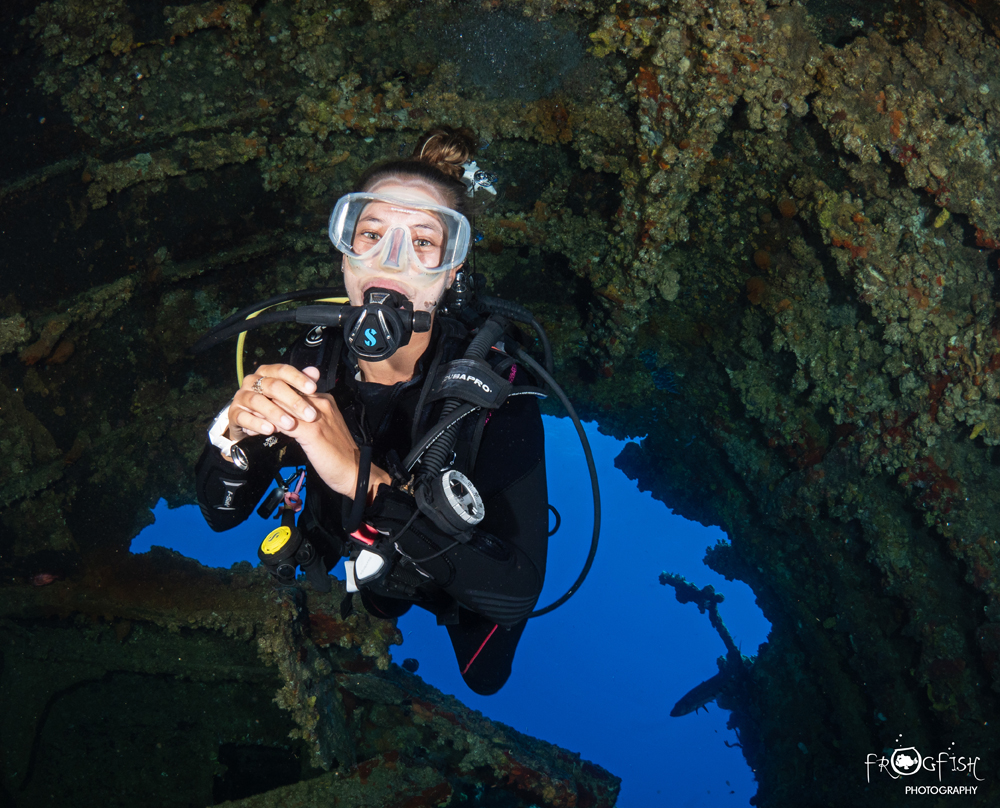
The RMS Rhone was a UK Royal Mail Ship wrecked off the coast of Salt Island on 29 October 1867 in a deadly hurricane. Now it is the most popular dive site in the region. The dive briefings for the site are filled with stories of the fate of the ship and some eye-opening tales since.
The wreck and surrounding area become the British Virgin Island’s first national marine park in 1980. Many of the underwater segments of the 1977 thriller The Deep were filmed on the Rhone, requiring actors Jacqueline Bisset, Nick Nolte and Robert Shaw to learn how to scuba dive.
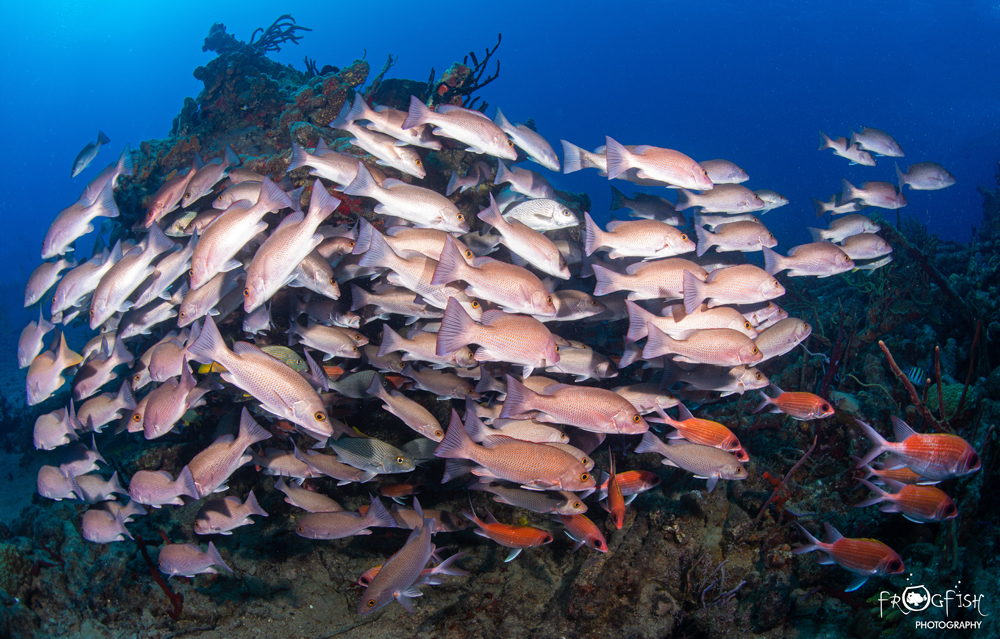
You’ll need at least two dives to fully experience the RMS Rhone. The ship split apart on sinking and the bow drifted just a little before sinking. The two halves are about 100 feet apart with the bow sitting in deeper water (around 25 meters / 80ft). So you are best to explore the bow fully on a single dive and then head to the stern on your second dive.

Whilst the history, artifacts and stories from the movies are absorbing, as soon as we got underwater to dive her, it was the incredible marine life that had us hooked. Two seahorses had made their home right at the bow of the wreck. Stingrays lay buried in the sandy sea bed. The structure is covered in colourful corals and sponges. Schools of fish occupy the overhangs and metal remains. We saw sharks on all three dives and were treated to a huge spotted eagle ray gliding over the wreck. Lobsters waved their antennae at us from every crevice. Life is everywhere you look on this dive.
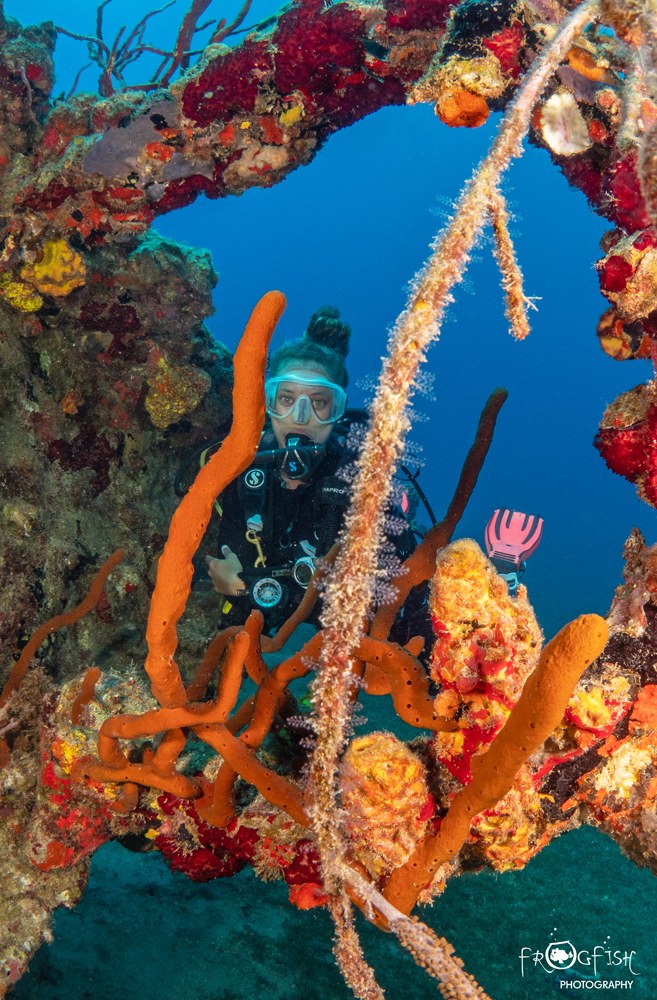
The marine park status has certainly ensured that this is one of the best wrecks we have dived in the Caribbean. Whilst we did not get the chance to do this – we bet it would make an awesome night dive.

Check out our next blog to find out more about the diving and watch out for our full feature in the next edition of Dive Travel Adventures Magazine in July!
For more information about BVI Wreck Week 2024 visit their website here.
Nick and Caroline were hosted by BVI Wreck Week
The Moorings provided their yacht for the week
Host Dive Centres:






